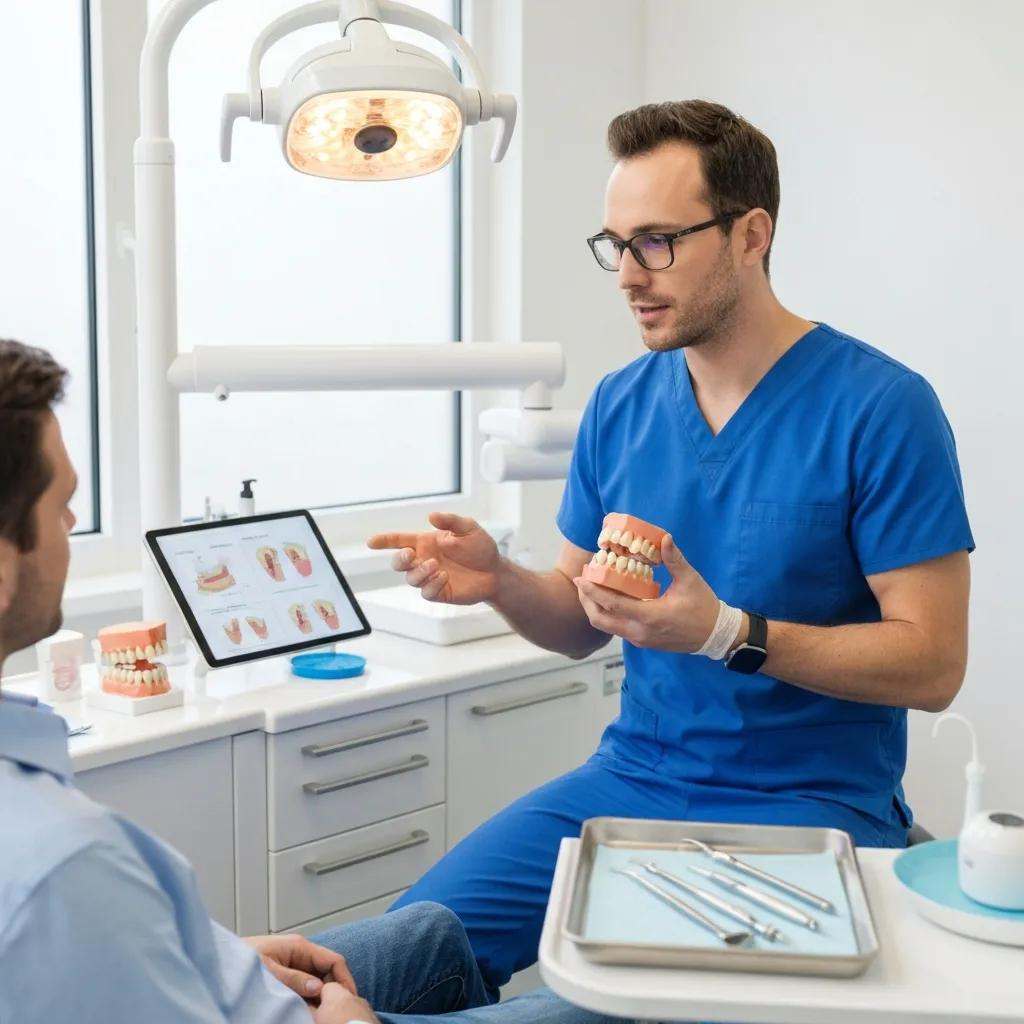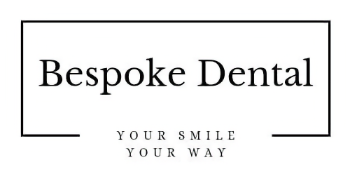Unlock the Secrets of Full Mouth Restoration in One Day

Full mouth restoration in one day—commonly called "teeth in a day" or same day dental implants—delivers a functional, aesthetic prosthesis during a single surgical visit by combining immediate-load implant techniques with a provisional prosthesis.
This article explains how immediate-loading protocols, strategic implant configurations like All-on-4, and modern digital workflows (CBCT, guided surgery, CAD/CAM prosthetics) work together to restore chewing function and smile aesthetics quickly. Readers will learn the procedural steps from preoperative diagnostics through same-day provisionalization, understand candidacy criteria and bone grafting options, and see clear comparisons between same-day and traditional staged implant strategies. We will also break down cost drivers and financing choices, outline the recovery and osseointegration timeline, and summarize long-term success rates and the role of advanced imaging in improving outcomes. Each section uses evidence-based logic and practical examples to help patients and clinicians evaluate whether a one-day full arch replacement is appropriate and sustainable. First, we define the concept and contrast it with conventional staged implant rehabilitation to set a clear foundation for subsequent technical and patient-focused guidance.
What Is Full Mouth Restoration in One Day?
Full mouth restoration in one day is a treatment approach that replaces an entire dental arch with implant-supported teeth during a single surgical appointment by using immediate-load implants and a provisional prosthesis. The mechanism relies on placing implants with sufficient primary stability and attaching a temporary fixed bridge that distributes occlusal forces while osseointegration proceeds, restoring function and appearance the same day. The primary benefit is eliminating prolonged edentulous periods and reducing the number of surgical appointments compared with staged protocols, which separate implant placement from final prosthesis delivery. This rapid pathway depends on accurate diagnostics—clinical exam, CBCT imaging, and digital planning—to ensure appropriate implant positions and prosthetic design, which leads into the step-by-step workflow below.
How Does the Teeth in a Day Procedure Work?
The teeth in a day procedure begins with comprehensive diagnostics—CBCT 3D imaging, intraoral scans, and clinical records—to create a surgical and prosthetic plan that supports immediate loading. Digital planning converts imaging into a surgical guide and a CAD/CAM provisional prosthesis so surgeons can place implants in planned angulations and attach a predesigned temporary restoration the same day; this immediate provisional restores esthetics and masticatory function while protecting surgical sites. Careful intraoperative attention to primary implant stability (measured as insertion torque or ISQ when available) and the use of cross-arch splinted temporaries reduce micromotion that could interfere with osseointegration. After surgery, patients follow a staged dietary and hygiene protocol and return for progressive follow-up visits that monitor soft tissue healing and implant integration before definitive prosthesis fabrication.
- Preoperative diagnostics and digital planning produce a surgical guide and provisional prosthesis.
- Guided implant placement achieves desired angulation and primary stability, avoiding vital structures.
- Immediate provisionalization splints implants across the arch, enabling early function pending osseointegration.
This stepwise workflow leads naturally into a comparison with traditional staged implant approaches.
What Are the Key Differences Between Same Day and Traditional Full Mouth Implants?
Same day implants prioritize immediate provisional restoration and fewer surgical visits, while traditional staged implants favor delayed loading to allow undisturbed osseointegration before prosthesis attachment. Immediate-load approaches reduce treatment time and improve early quality of life, yet they require stricter candidacy evaluation—adequate bone volume, favorable occlusion, and good systemic health—whereas staged protocols can accommodate more complex grafting and compromised sites. Risk profiles differ: same day procedures emphasize primary stability and cross-arch splinting to minimize micromotion, while delayed approaches mitigate biomechanical stress during healing at the expense of longer edentulous periods. Understanding these trade-offs clarifies when a conventional staged approach remains the safer option for long-term implant success.
- Immediate Benefits: Faster restoration of function and esthetics with same day implants.
- Predictability: Staged protocols offer predictable osseointegration in highly compromised cases.
- Patient Experience: Same day reduces visits and transitional discomfort, while staged may require interim removable prostheses.
These differences set the stage for a technical look at the All-on-4 strategy, which commonly enables same-day full arch replacement.
How Do All-on-4 Dental Implants Enable One Day Full Arch Replacement?
All-on-4 dental implants enable one day full arch replacement by using four strategically placed implants—two anterior vertical and two posterior tilted implants—to maximize bone contact, avoid anatomic constraints, and provide immediate cross-arch support for a provisional bridge. The mechanism leverages biomechanical principles: tilting posterior implants increases anteroposterior spread and reduces cantilever length, which improves load distribution for immediate loading. The technique depends on pre-surgical CBCT planning and computer-guided placement to achieve angulation and depth that support prosthetic emergence profiles; this digital precision is central to immediate provisional success.
All-on-4 Concept for Dental Implants: A Prosthodontic Perspective
The All-on-4®concept is one such treatment procedure which enlightens us for its use in the completely edentulous patients and which also leaves behind the routine treatment alternative of conventional dentures with successful outcome in the short term, long term and the retrospective studies that have been done in the past.
Prosthodontic perspective to all-on-4® concept for dental implants, 2014
This comparison table summarizes implant configurations and how they relate to same-day readiness.
ConfigurationKey AttributesImmediate Loading FeasibilityAll-on-4Four implants, posterior tilting, reduced need for graftingHigh when primary stability achieved; common in same-day protocolsAll-on-6Six implants, greater support and redundancyHigh feasibility; may offer improved long-term load distributionImplant-supported denture2–4+ implants with removable overdenture attachmentVariable; often used when cost or bone limits fixed solutions
This table highlights why All-on-4 is often chosen for same-day treatments: fewer implants with strategic angulation can eliminate the need for extensive grafting while supporting immediate provisionalization. The next section describes the surgical and prosthetic steps that actualize the All-on-4 technique.
What Is the All-on-4 Technique and How Is It Performed?
The All-on-4 technique is performed by digital planning of implant positions using CBCT, fabricating a surgical guide, and placing four implants with the posterior implants tilted to maximize bone engagement and avoid sinus or nerve interference. During surgery the guide transfers the digital plan to the mouth, enabling controlled osteotomies and predictable implant insertion torques that support immediate provisionalization; the provisional prosthesis is splinted across all implants to distribute occlusal loads. Prosthetically, provisional frameworks are adjusted to achieve passive fit and immediate esthetics while protecting healing tissues. Postoperative follow-up checks implant stability and soft tissue health before definitive prosthesis fabrication, linking surgical precision to long-term prosthetic outcomes.
This procedural description flows into the patient benefits that All-on-4 commonly delivers.
What Are the Benefits of All-on-4 Implants for Same Day Restoration?
All-on-4 delivers immediate functional and esthetic improvement by providing a fixed provisional restoration on the day of surgery, improving chewing ability and self-confidence without prolonged use of removable dentures. The reduced number of implants and avoidance of extensive grafting can lower surgical morbidity and shorten treatment duration, which often translates into cost and recovery advantages compared with complex staged reconstructions. Clinical series report favorable prosthetic survival rates when indications and surgical technique are appropriate, supporting All-on-4 as a predictable option for many patients.
- Faster restoration: Immediate fixed teeth the same day as surgery.
- Lower invasiveness: Fewer implants and often no grafting required.
- High patient satisfaction: Improved function and appearance promptly.
These patient-centric benefits prompt careful candidate selection, discussed next.
Who Is a Candidate for Same Day Full Mouth Dental Implants?
A candidate for same day full mouth dental implants typically exhibits adequate bone volume and density for primary implant stability, controlled systemic health (no uncontrolled diabetes or immune compromise), and a commitment to diligent oral hygiene and follow-up care. The biological mechanism underpinning candidacy is that primary (mechanical) stability must be sufficient to permit immediate loading while osseointegration (biologic stability) develops over months; when mechanical stability is low, immediate loading risk increases. Behavioral and systemic risk factors—heavy smoking, poor glycemic control, active oral infection—raise complication risks and often redirect treatment toward staged approaches.
- Adequate bone volume and quality: Enough cortical and cancellous bone to achieve insertion torque for primary stability.
- Controlled systemic health: No unmanaged conditions that impair healing, such as uncontrolled diabetes.
- Good oral hygiene and non-compromised soft tissues: Low risk of peri-implant infection and ability to maintain prosthesis.
- Realistic expectations and adherence: Understanding of staged follow-ups and maintenance requirements.
This checklist leads into options for patients with jawbone loss, including grafting strategies that can support candidacy.
What Are the Criteria and Contraindications for Immediate Full Mouth Reconstruction?
Criteria for immediate full mouth reconstruction include measurable primary stability at implant placement, adequate prosthetic space for a cross-arch provisional, and absence of acute infection; contraindications include uncontrolled systemic disease, active periodontal or endodontic infection, heavy tobacco use, and insufficient bone without feasible augmentation. The clinical rationale is that immediate loading depends on limiting micromotion below thresholds that jeopardize bone healing; if risk factors increase micromotion or infection risk, staged protocols offer safer outcomes. Clinicians therefore perform a risk-benefit assessment considering local bone, patient systemic status, and occlusal forces before committing to same-day loading. Understanding these limits guides decisions about when to pursue grafting or staged rehabilitation instead.
This leads to a discussion of how bone grafting can expand eligibility for same-day approaches or necessitate staging.
How Does Bone Grafting Support Candidates with Jawbone Loss?
Bone grafting augments deficient ridges using autograft, allograft, or xenograft materials to rebuild volume and density when native bone is insufficient for implant primary stability. The timing of grafting determines feasibility for same-day loading: minor particulate grafting or ridge preservation may be compatible with immediate implant placement and provisionalization, whereas extensive onlay grafts or vertical augmentations typically require staging and healing before implants can be loaded. Choice of graft material and technique depends on defect size, systemic factors, and whether simultaneous implant placement is possible; clinicians weigh graft integration timelines against patient expectations for a single-day solution. When grafting precludes immediate loading, a staged pathway remains a reliable alternative to achieve predictable long-term results.
- Autograft: Gold standard for osteogenic potential but may require donor site morbidity.
- Allograft/xenograft: Readily available alternatives with varying remodeling rates.
- Staged vs simultaneous: Minor grafts can be simultaneous; major reconstructions usually staged.
Having clarified candidacy and grafting trade-offs, we next address costs and financing considerations for same day full arch solutions.
What Are the Costs and Financing Options for Full Mouth Restoration in One Day?
Costs for full mouth restoration in one day are driven by diagnostic imaging (CBCT and scans), implant fixtures and abutments, surgical time, provisional and permanent prosthesis fabrication (CAD/CAM lab fees), and any grafting or adjunctive procedures needed. The mechanism influencing price is complexity: more implants, higher-end materials (e.g., zirconia vs acrylic), and extensive grafting increase lab and surgical expenses, while streamlined All-on-4 protocols can lower costs by reducing implant count and surgical stages. Patients should request itemized quotes and understand which components—diagnostics, implant fixtures, prosthetic materials, lab fees, and anesthesia—are included.
Below is an EAV-style breakdown of typical cost drivers and how they contribute to overall pricing.
Cost ComponentWhat It CoversTypical Impact on Total PriceDiagnostics (CBCT, scans)Planning accuracy and surgical guidesModerate; essential for predictable outcomesImplant fixtures & abutmentsTitanium or zirconia implant bodies and connectorsHigh; number and brand influence costProsthesis (temporary & permanent)CAD/CAM milling, materials (acrylic, hybrid, zirconia)High; material choice major cost driverSurgical time & anesthesiaOperating room time and sedation/IV medsModerate; complexity-dependentGrafting & adjunctsBone/sinus lifts or membranes if requiredVariable; can be high in complex cases
This table clarifies how each element affects final pricing and leads into practical financing options patients commonly use.
How Is the Cost of Same Day Full Arch Dental Implants Calculated?
Cost calculation considers the sum of diagnostics, implant hardware, prosthetic fabrication (temporary and final), surgical fees, anesthesia, lab work, and any grafting; each element varies with complexity and material selection. For example, choosing a high-strength zirconia fixed bridge increases lab and material costs compared with an acrylic-fused-to-metal provisional, while additional implants add fixture and surgical time expenses. Clinicians often present low/medium/high scenarios in itemized quotes so patients can compare inclusions—such as whether the final prosthesis, follow-up visits, and maintenance are bundled. Asking for an itemized estimate and projected timelines helps patients understand which components could be staged or upgraded to meet budgetary constraints.
- Material choices: Zirconia and monolithic restorations cost more than acrylic-based solutions.
- Number of implants: More implants raise fixture and surgical costs but can improve redundancy.
- Grafting needs: Significant grafting materially increases total price and may require staging.
After cost considerations, practical financing strategies help patients manage out-of-pocket expenses.
What Financing Plans Are Available for Immediate Dental Implant Solutions?
Common financing options for implant solutions include in-office payment plans, third-party healthcare lenders offering installment loans, and medical credit lines that allow deferred or structured payments; each vehicle has different terms and qualification criteria. Patients should compare interest rates, payment periods, and whether the plan covers both surgical and prosthetic phases, and they should request written details on any upfront deposits or hidden fees. Insurance coverage is variable—typically limited for implants—so confirming coverage for component procedures (extractions, imaging, sedation) and securing preauthorization where possible helps manage expectations. Asking providers for multiple scenarios (e.g., phased payments, financing only major costs) enables patients to select an approach aligning with clinical needs and financial capacity.
- In-office plans: Flexible but vary by clinic; always confirm total cost and payment schedule.
- Third-party lenders: Provide fixed-term loans; compare APR and fees.
- Medical credit: Useful for deferred payments but read terms carefully for interest accrual.
With costs and financing addressed, we move to recovery expectations and the biologic timeline of healing and integration.
What Is the Recovery Process After One Day Full Mouth Restoration?
Recovery after one day full mouth restoration includes immediate post-op management of swelling and discomfort, short-term dietary modifications to protect provisional restorations, and a structured follow-up schedule to monitor soft tissue healing and implant stability. Mechanistically, the first 48–72 hours focus on inflammation control and preventing infection through analgesics, ice, and oral hygiene adjustments, while the subsequent weeks support soft tissue maturation around implant platforms and progressive loading protocols. Long-term recovery involves monitoring osseointegration over 3–6 months until biological stability allows delivery of the final prosthesis; regular maintenance appointments thereafter preserve peri-implant health.
Recovery PhaseTypical TimeframeKey ObjectivesImmediate0–2 weeksPain and swelling control, provisional care, soft tissue protectionShort-term2–12 weeksSoft tissue healing, dietary progression, suture removal and adjustmentsOsseointegration3–6 monthsBone remodeling and implant stability checks before final prosthesisMaintenanceOngoing annual/biannualProfessional checks, hygiene, prosthetic repairs if needed
This timeline clarifies expectations and prepares patients for required follow-up and maintenance, which we now unpack in immediate post-op guidance.
What Should Patients Expect Immediately After the Procedure?
In the first 48–72 hours patients should expect moderate swelling, mild-to-moderate pain controlled with prescribed analgesics, and a soft or blended diet to protect the provisional prosthesis; applying cold packs and following medication instructions reduces discomfort. Temporary prosthesis care includes avoiding hard or sticky foods, keeping the appliance clean with gentle rinsing, and following detailed oral hygiene directions to prevent infection around surgical sites. Emergency signs that warrant immediate evaluation include uncontrolled bleeding, fever, severe pain not relieved by medication, or signs of prosthesis instability.
These immediate-care steps transition into the longer biological process of osseointegration, which determines when a permanent prosthesis can be placed.
How Long Is the Healing and Osseointegration Period for Same Day Implants?
Osseointegration typically occurs over 3–6 months, during which time the initial mechanical stability gradually transitions to biological stability as new bone forms around the implant surface; this period can vary with patient health, bone quality, and smoking status. Factors that prolong integration include systemic conditions (poor glycemic control), low bone density, certain medications, and smoking, all of which may necessitate extended monitoring or delayed final prosthesis delivery. During integration, clinicians schedule progressive checks—radiographs, clinical stability tests, and occlusal assessments—to confirm readiness for the definitive restoration. Understanding this timeframe helps patients plan prosthetic sequencing, dietary adjustments, and long-term maintenance visits.
- Typical window: 3–6 months for cortical and trabecular bone remodeling.
- Influencing factors: Systemic health, bone quality, and patient behavior.
- Follow-up schedule: Regular professional checks before final prosthesis fabrication.
What Are the Long-Term Benefits of Immediate Load Full Arch Implants?
Long-term benefits of immediate-load full arch implants include sustained improvements in masticatory efficiency and nutrition, stable esthetics that support speech, and psychosocial advantages such as improved self-confidence and social engagement. Over time, a fixed implant prosthesis can reduce the recurring costs and inconvenience associated with removable dentures—such as relining, adhesives, and frequent replacements—providing lifetime value when maintained properly. Evidence indicates that with proper case selection and prosthetic planning, many patients achieve durable function and aesthetics for years, which emphasizes the importance of follow-up care and periodic prosthetic assessment. Recognizing these sustained benefits highlights why immediate load approaches, when indicated, can be transformative for quality of life.
This discussion of outcomes leads to the final point about how technology improves implant longevity and predictability.
How Do Advanced Technologies Like 3D Imaging Improve Implant Longevity?
Advanced technologies such as CBCT 3D imaging, computer-guided surgery, and digital CAD/CAM workflows improve implant longevity by enabling precise assessment of bone volume and density, accurate avoidance of vital anatomy, and fabrication of prostheses with improved fit and occlusal harmony. The knowledge graph triple here illustrates the relation: CBCT [entity] reveals [relationship] bone morphology [entity], which informs guided surgery [entity] that increases placement accuracy [relationship] and reduces complications. Guided surgical templates reduce human error in angulation and depth, while digital prosthetic design minimizes laboratory misfit—both factors that lower mechanical stress and marginal bone loss over time. Integrating these technologies into treatment planning therefore translates digital precision into measurable clinical benefits.
- CBCT: Accurate 3D bone assessment that directly informs implant positioning.
- Guided surgery: Transfers digital plans precisely into surgical execution.
- Digital prosthetics: Improves fit and reduces lab-related discrepancies that could compromise longevity.
These technological advantages conclude the article and frame same day full mouth restoration as a predictable, modern option when biological, prosthetic, and patient factors align.





